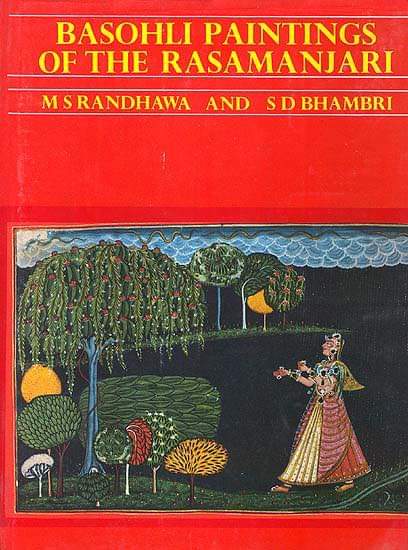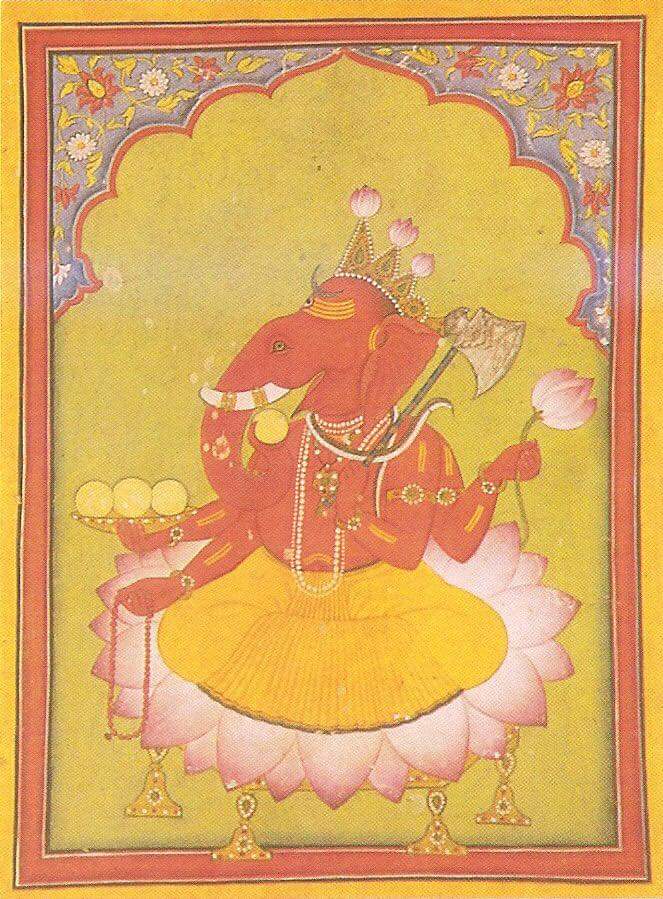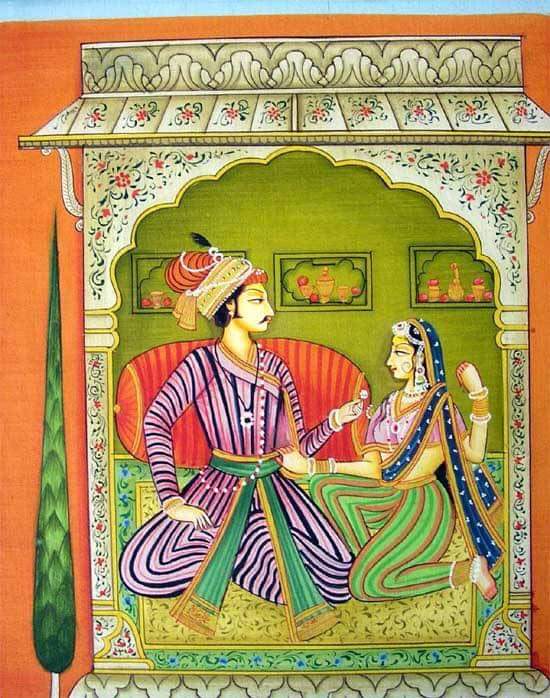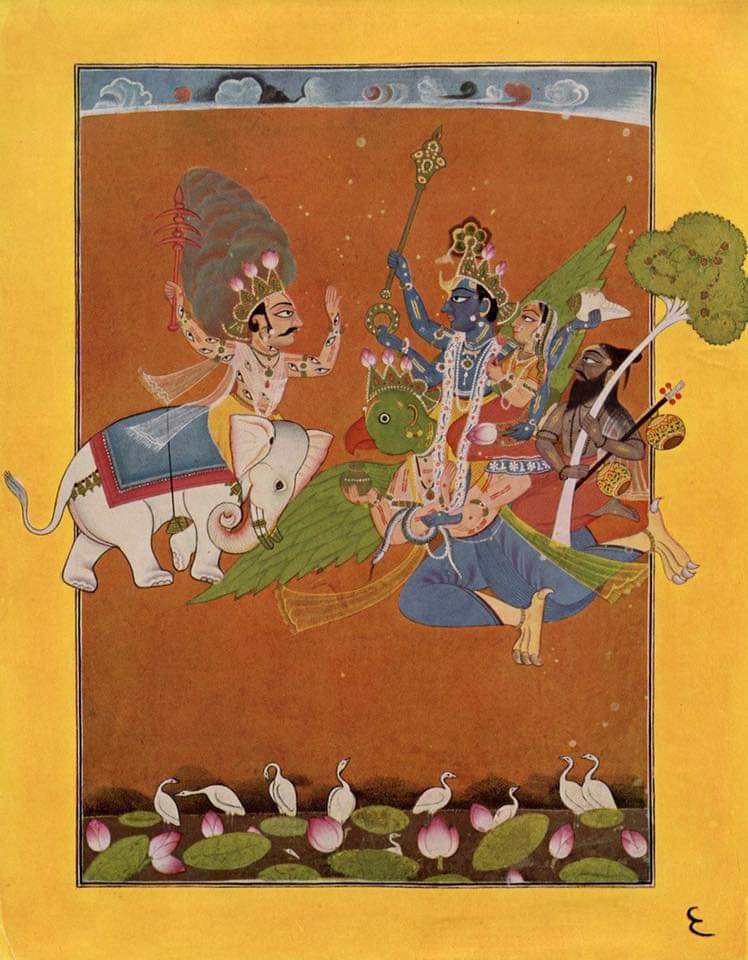Facts about Basohli School of Hill Painting
1. The story of Pahari art and subsequently schools of paintings begins from the town of Basohli (Kathua district) situated on the right bank of River Ravi at an altitude of 1876 ft.
2. Basohli School of Hill Painting evolved in the
1. The story of Pahari art and subsequently schools of paintings begins from the town of Basohli (Kathua district) situated on the right bank of River Ravi at an altitude of 1876 ft.
2. Basohli School of Hill Painting evolved in the
17th and 18th centuries as a distinctive style of painting. It incorporates a fusion of Hindu mythology, Mughal miniature techniques and folk art of the local hills This style of painting derives its name from the place of its origin i.e. town of Basohli.
3. The great patrons
3. The great patrons
and the originators of the Basohli school of art were Raja Sangram Pal and Raja Kirpal Pal (The Pal rulers of Basohli).
4. This style of painting was first introduced to the world in the annual report (1918-19) of the Archaeological Survey of India published in 1921. Referring
4. This style of painting was first introduced to the world in the annual report (1918-19) of the Archaeological Survey of India published in 1921. Referring
to the acquisitions of the Archaeological Section of the Central Museum, Lahore, the report stated - "…a series of old paintings of the Basohli School were purchased, and the Curator concludes that the Basohli School is possibly of pre-Moghul origin, and so called Tibeti
pictures are nothing but late productions of this school.” This was the first time the world was also introduced to Pahari miniatures.
5. The most popular themes of Basohli Paintings come from Shringara literature like Rasamanjari (A Bouquet of Delights), Gita Govinda and
5. The most popular themes of Basohli Paintings come from Shringara literature like Rasamanjari (A Bouquet of Delights), Gita Govinda and
Ragamala.
6. The Pal rulers of Basohli were great supporters of the arts. Under the patronage of Raja Kripal Pal, an artist named Devidasa executed miniature illustrations for the Rasamanjari, in 1694 A.D. One other series of Rasamanjari miniatures is found in the same style,
6. The Pal rulers of Basohli were great supporters of the arts. Under the patronage of Raja Kripal Pal, an artist named Devidasa executed miniature illustrations for the Rasamanjari, in 1694 A.D. One other series of Rasamanjari miniatures is found in the same style,
from the same period, but clearly painted by a different hand. These Rasamanjari miniatures are now scattered around the world, found in many Indian and foreign museums and private collections.
7. Basohli paintings are prepared on hand made paper sheet and very distinct from
7. Basohli paintings are prepared on hand made paper sheet and very distinct from
other Pahari schools, marked by striking blazing colors, red borders, bold lines and rich symbols.
8. Receding foreheads and large expressive lotus-petal shaped eyes characterize the faces of the painted figures. The painting themselves are mostly painted in the primary colors
8. Receding foreheads and large expressive lotus-petal shaped eyes characterize the faces of the painted figures. The painting themselves are mostly painted in the primary colors
of Red, Blue and Yellow. The earliest Basohli paintings also know as the Basohli Primitives were characterized by the primitive vigour of early Rajasthani paintings.
9. Dr Ananda K. Coomaraswamy, a pioneering historian and philosopher of Indian art, was the first to publish
9. Dr Ananda K. Coomaraswamy, a pioneering historian and philosopher of Indian art, was the first to publish
about Basohli in his book Rajput Paintings in 1916.
10. Basohli miniatures were incorporated in Indian postal stamps as late as 2011.
11. Basohli artists started diminishing as early as end of the 10th century owing to a want of patronage, even as Guler, Kangra and Garhwal
10. Basohli miniatures were incorporated in Indian postal stamps as late as 2011.
11. Basohli artists started diminishing as early as end of the 10th century owing to a want of patronage, even as Guler, Kangra and Garhwal

 Read on Twitter
Read on Twitter





